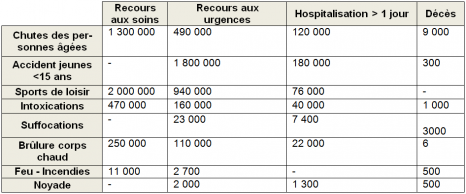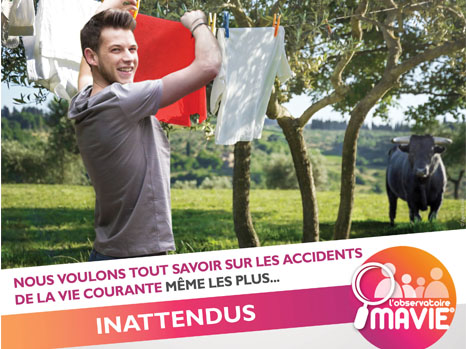Researcher Contact
Emmanuel LagardeUnité Inserm 897 "CENTRE DE RECHERCHE INSERM EPIDEMIOLOGIE ET BIOSTATISTIQUE"
+33 (0)5 57 57 15 04
rf.2xuaedrob-u.depsi@edragal.leunamme
During their lives, every French person will be the victim of one accident in everyday life every 5 years, on average (fall, burn, drowning, etc.). Taken as a whole, these statistics represent 11 million people injured every year. The Accident Prevention and Trauma Treatment team led by Emmanuel Lagarde (Inserm Unit 897 ‘Institute of Public Health, Epidemiology and Development’/University of Bordeaux), in partnership with Calyxis, is today launching the MAVIE study to find out the scale and nature of accidents in everyday life in France. The researchers hope to be able to identify the factors associated with their occurrence and severity, by taking a representative sample of 100,000 French people.
Accidents in everyday life represent all unintentional injuries (excluding road traffic and occupational accidents). In particular they include domestic, sports, leisure and school accidents. Every year these accidents resulted in 11 million injured people, including 5 million requiring emergency treatment. They are also responsible for nearly 20,000 deaths, equivalent to five times more than casualties of road traffic accidents. Among them, the greatest number were victims to falls, suffocation and poisoning.
However, these accidents are still very poorly understood or studied.
Accidents in everyday life: statistics to be updated
The following table presents the annual statistics for accidents in everyday life in France. These data come from studies by Inserm, by the health watchdog of the French National Institute for Accident Prevention and Health Education, as well as studies carried out by the French Institute for Public Health Surveillance, such as the Permanent Survey of Accidents in Everyday Life. However, it is proving essential to update these data.
‘In France, we have information about the types of these accidents, but little data about the variables explaining them‘, highlights Emmanuel Lagarde, Inserm Research Director.
A cohort study to better understand these ‘invisible’ accidents
The MAVIE study will rely on information collected from a large number of volunteers monitored over several years: in this case, 100,000participants. The methods are therefore based on thorough collection of data reported or observed prior to the accident occurring, such as the domestic environment, habits and lifestyles and, finally, the patient’s health. These data are essential to a better understanding of accidents in everyday life. They would enable priority intervention programmes to be put forward to reduce the number of victims.
The goal is to answer these big questions:
– What are these accidents?
– When, how and where do they occur?
– What factors are associated with their occurrence and severity?
– How can they be prevented?
– What is the outcome for the victims?
How do you volunteer?
100,000 people are needed to take part in the MAVIE study. You can enrol as a household, on the site www.observatoire-mavie.com. The enrolment questionnaire comprises a general description of the household, habits and lifestyles, and secondly a description of each individual member of the household. Quarterly reminders will be used to compile a summary of any accidents occurring in the household.

© Affiche observatoire MAVIE